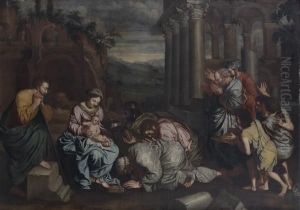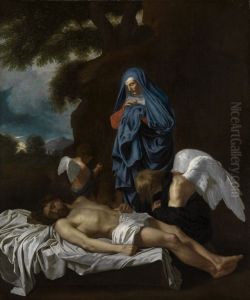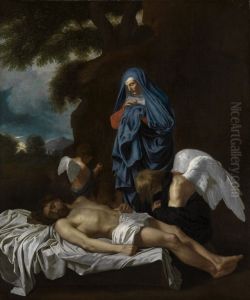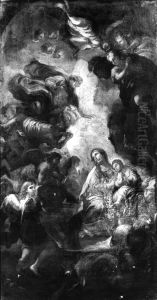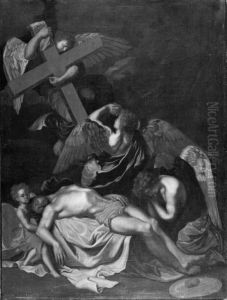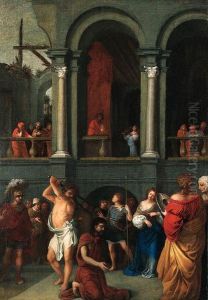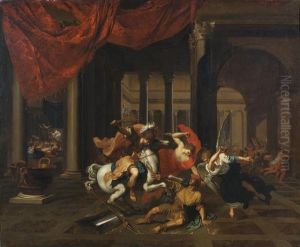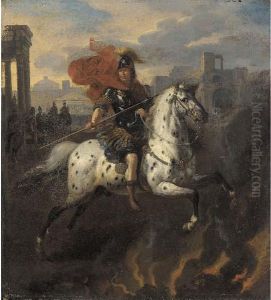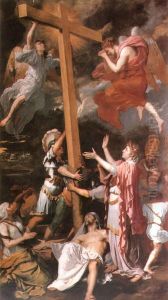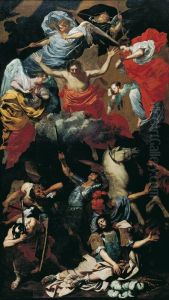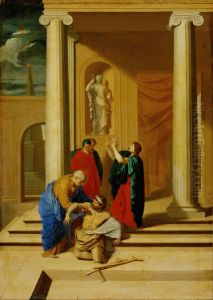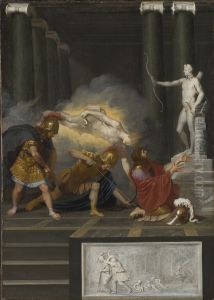Bertholet Flemalle Paintings
Bertholet Flémalle, also known as Bertholet Flemalle or Barthélémy Flémal, was a prominent Baroque painter who was born in Liège, then part of the Prince-Bishopric of Liège and now in modern-day Belgium, in 1614. He is often considered one of the key figures in the development of the Baroque style in the Meuse region and was influential in establishing the Liège school of painting. Flémalle's style was heavily influenced by his travels and exposure to the works of the Italian masters, as well as the French classical style.
Flémalle trained under the painter Gérard Douffet in Liège and later traveled to Rome, which was a customary practice for artists of his time wishing to perfect their craft. In Rome, he absorbed the influences of the Italian masters, particularly the work of Caravaggio, whose dramatic use of light and shadow had a significant impact on Flémalle's own painting techniques. After spending time in Rome, he traveled to France, where he was exposed to the works of Nicolas Poussin and other French classical painters.
Upon his return to Liège, Flémalle opened his own workshop and began receiving numerous commissions, which allowed him to establish a successful career. His works include religious compositions, altarpieces, and portraits. Flémalle's paintings are characterized by their dynamic compositions, skilled use of chiaroscuro, and strong narrative quality. One of his most famous works is 'The Three Graces,' which showcases his talent for combining mythological themes with a naturalistic style.
Despite his success, there are relatively few surviving works confidently attributed to Flémalle, and much of his life remains poorly documented. His influence, however, was felt by his students and followers, who helped disseminate his style throughout the region. Flémalle's legacy continued through the work of those he taught, including the notable artist Gérard de Lairesse, who became a leading Dutch painter of the classical period.
Bertholet Flémalle passed away in 1675 in Liège. Today, his work is recognized for its contribution to the Baroque movement and is featured in several museums and collections, illustrating the enduring appeal of his artistic vision.
